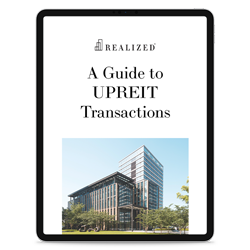
For investment property owners contemplating their next strategic move, an Umbrella Partnership Real Estate Investment Trust (UPREIT) might be a compelling option. This structure allows seasoned real estate professionals to inject unique flexibility and liquidity into their portfolios while potentially deferring capital gains taxes.
Understanding the UPREIT Mechanism
At its core, an UPREIT is a partnership between your property and a Real Estate Investment Trust (REIT). Under Section 721 of the Internal Revenue Code, property owners can contribute their appreciated real estate into a REIT in exchange for Operating Partnership (OP) units. These units are somewhat akin to shares in the partnership, enabling the original property owner to defer immediate capital gains tax liabilities.
In practical terms, imagine this: you own a lucrative commercial property that has significantly appreciated. You wish to step back from active management and diversify without triggering a hefty tax bill. By contributing the property to an UPREIT, you receive OP units, which can later be converted into cash or shares of a publicly traded REIT. This mechanism doesn't involve a taxable event until you decide to convert or cash them out.
Advantages to Consider
- Tax Deferral: Just like a 1031 Exchange, a UPREIT transaction allows for the deferral of capital gains taxes. This is particularly advantageous for highly appreciated properties where selling outright would result in substantial tax liabilities.
- Diversification: Instead of holding a singular, illiquid asset, an UPREIT provides access to a diversified portfolio of properties managed by experienced professionals. This diversification can mitigate risks and enhance stable income production.
- Liquidity and Passive Income: Converting real estate into REIT shares can enhance liquidity—the ability to convert properties into cash often more readily than through traditional sale. Moreover, investors can receive income distributions as dividends, reflecting the performance of the underlying REIT.
When an UPREIT Makes Sense
UPREITs are particularly advantageous for property owners looking to exit direct property management while preserving income potential and tax efficiency. For example, a retiree tired of the landlord's life can transition into a passive investment, ensuring a steady income without the daily management hassles.
Additionally, those looking to strategically diversify—but retain skin in the real estate game—can utilize an UPREIT to balance their portfolio. By redistributing risk across various asset types and geographic locations, investors can protect against market shifts and locality risks that might disproportionately affect standalone properties.
Potential Pitfalls and Considerations
While UPREITs offer clear advantages, they require careful consideration and evaluation. The decision to exchange property through a UPREIT structure should account for potential lock-up periods, during which OP units cannot be easily liquidated. Additionally, REIT performance is closely tied to market conditions and the management proficiency of the REIT itself.
Moreover, property owners should be aware that once OP units are converted to REIT shares, the deferred tax gains are realized, potentially triggering a significant tax event.
Conclusion
In essence, a UPREIT can be a powerful vehicle for investment property owners seeking efficient ways to defer taxes, increase liquidity, and diversify their holdings. It offers a strategic pathway for reallocating capital without severing ties to potential real estate market growth. However, as with any significant investment decision, comprehensive financial and tax advisory is crucial to ensure alignment with personal and financial goals.



